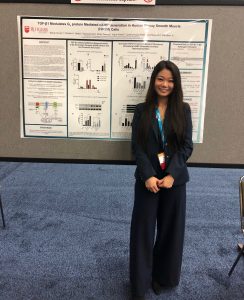.
G protein-coupled receptor signaling regulates many human airway smooth muscle (HASM) functions which are levels often associated with bronchodilator therapy for obstructive lung diseases such as asthma and chronic obstructive pulmonary disease. The G protein signaling network modulates airway smooth muscle relaxation through the β2-adrenergic receptor (β2AR), Gs, and adenylyl cyclase axis.Our previous studies have shown that levels of pro-fibrotic cytokine, transforming growth factor beta 1 (TGF-β1), attenuates β2AR-agonist-induced relaxation responses in HASM cells with isoproterenol (ISO) via a Smad2/3 pathway. We have shown that TGF-β1 inhibits the downstream pathway effects of cAMP. However, TGF-β1 showed little effect on forskolin (FSK)-stimulated cAMP levels in HASM cells and the specific mechanism of this phenomenon still remains clear. We hypothesize that TGF-β1 modulates Gs protein function of the β2AR receptor in HASM cells, thereby decreasing ISO-induced cAMP. These data from my poster show that TGF-β1 attenuates intracellular cAMP levels in HASM through modulation of Gs dependent signaling, as well as contractile agonist-induced phosphorylation of myosin light chain. Taken together, this data and our previous data suggest that TGF-β1 modulates not only remodeling associated with asthma, but also attenuates the actions of bronchodilators in asthma therapy.

